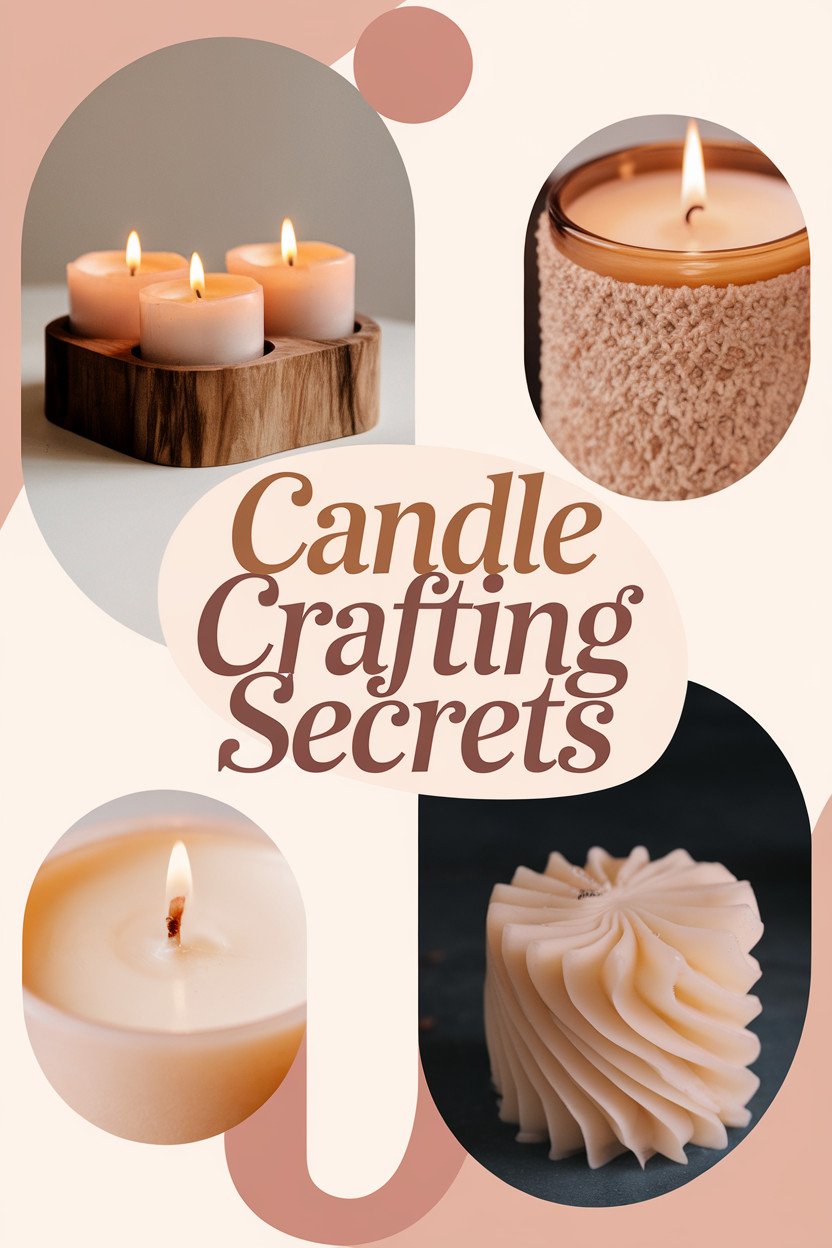Welcome to the world of candle making, where creativity meets functionality in the most beautiful way. Crafting your own homemade candles is a rewarding and enjoyable experience that can add warmth and ambiance to any space. In this article, we will reveal the secrets behind candle making – from selecting the right wax and fragrances to mastering design techniques. With our expert tips and techniques, you will be able to create unique and beautiful candles that illuminate your home.
- Candle making is a fun and rewarding activity that allows you to create unique and beautiful candles for your home.
- Choosing the right wax, fragrance, and wick are essential to creating high-quality candles.
- Mastering candle making techniques such as coloring and design can take your creations to the next level.
- Following safety precautions and troubleshooting common issues can ensure a safe and enjoyable candle making experience.
- With the right tips and guidance, even beginners can create professional-looking candles.
Getting Started with Candle Making
If you’re a beginner in candle making, there are essential supplies and tips that you need to know before beginning your journey.
- Candle Making Supplies: To start with candle making, you will need supplies such as wax, wicks, fragrance oils, color dyes, a double boiler, a thermometer, a pouring pitcher, and a stirring utensil. Purchase quality supplies from a reputable supplier to ensure your candles are of good quality.
- Candle Making Tips: Before embarking on your first candle-making adventure, there are a few tips to ensure the process is smooth sailing. These tips include measuring wax and fragrance oils accurately, keeping your work area clean, and heating wax and oils to the correct temperature before pouring.
- Candle Making for Beginners: For beginners, it is best to start with container candles. These candles are easy to make, require less time, and are less messy than other types of candles. Once you have mastered container candles, you can progress to other types of candles such as pillar candles and taper candles.
By following these simple tips, you will be well on your way to creating beautiful, handmade candles that will become a focal point in your home.
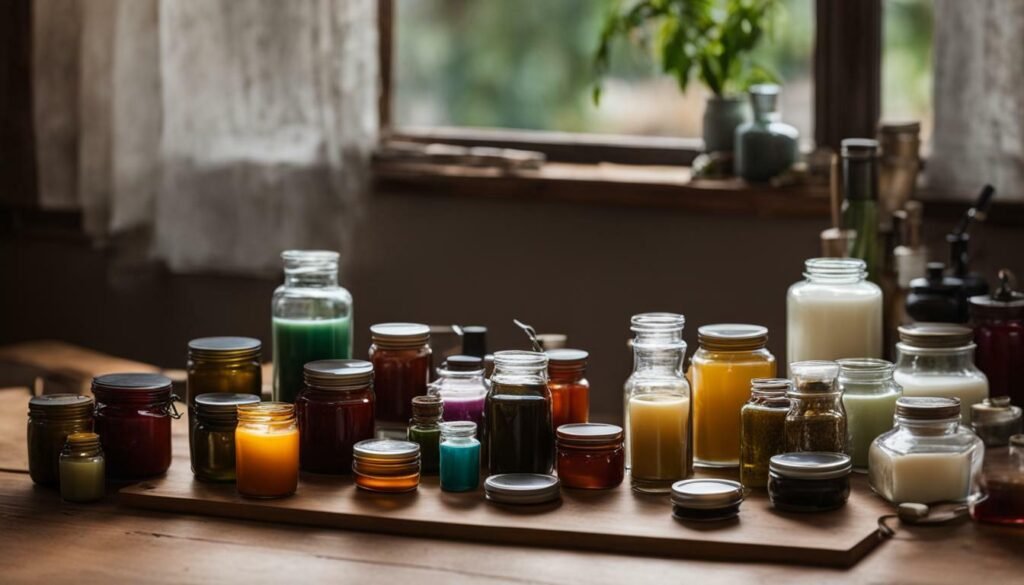
When it comes to candle making, selecting the right wax is crucial to ensure the desired burn time, fragrance throw, and appearance of your candles. Here are some candle making tips and information on different wax types:
- Paraffin Wax: This is the most commonly used wax and is widely available, making it an inexpensive choice. Paraffin wax has a high melting point and creates a smooth and shiny finish. However, it is non-renewable and can produce soot.
- Soy Wax: Made from soybean oil, soy wax is eco-friendly, renewable, and burns cleaner than paraffin wax. It has a lower melting point and a creamy appearance, but may have slightly less fragrance throw.
- Beeswax: This natural wax has a subtle honey scent and is known for its long burn time and air purifying properties, making it a great choice for homemade candles. However, it is more expensive than other waxes and can be difficult to work with due to its high melting point.
There are also several other wax types available, including palm wax, coconut wax, and gel wax. Consider the desired outcome of your candles and select the wax that best suits your needs.
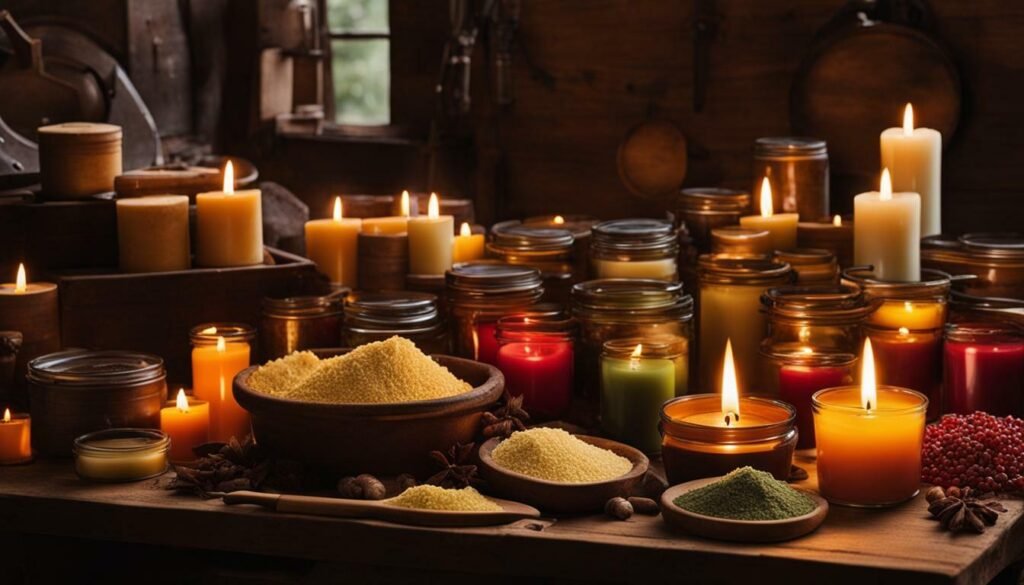
Adding Fragrance to Your Candles
Creating beautifully scented candles is a great way to enhance your home environment. When selecting fragrances for your candles, consider the atmosphere you want to create. Do you want a cozy, warm aroma for the winter months, or a fresh, floral scent for spring?
Here are some tips for adding fragrance to your candles:
- Choose high-quality fragrance oils specifically formulated for candle making. Essential oils can also be used but may require a higher concentration to achieve the desired scent.
- Measure fragrance oils carefully using a scale or graduated cylinder to ensure accurate and consistent results.
- Experiment with blending fragrances to create unique and intriguing scents.
- Add fragrance oils at the correct temperature, typically around 185°F (85°C), when the wax is melted but not too hot.
- Stir fragrance oils into the wax thoroughly for even distribution.
- Avoid adding too much fragrance oil, as this can cause problems such as poor burn performance and the scent being too overpowering.
- Consider adding fragrance at different stages of the candle making process for a more nuanced scent, such as adding a layer of fragrance to the top of the candle after pouring.
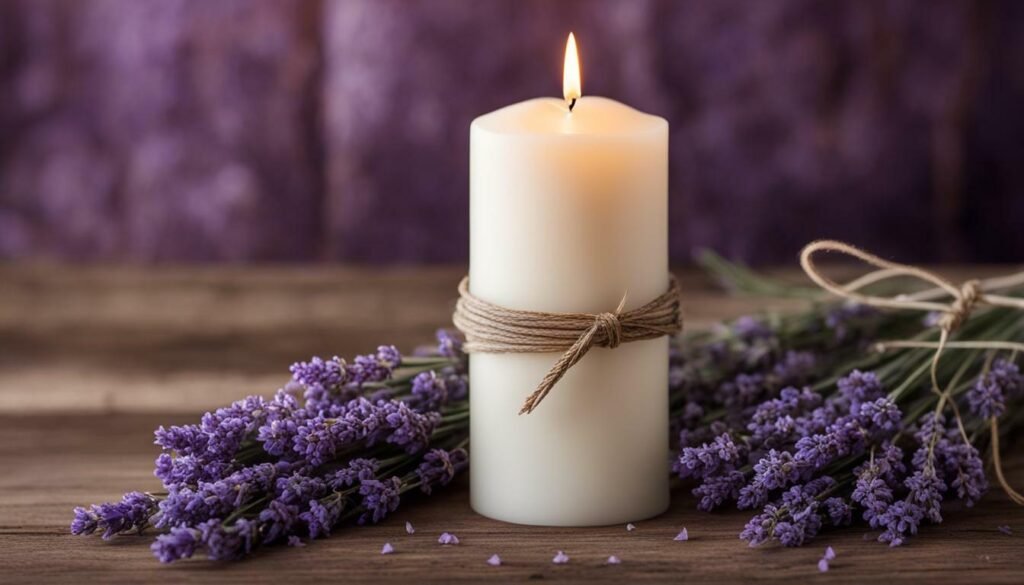
Adding the perfect fragrance to your candles can be a fun and rewarding process. Follow these tips to ensure your candles are not only visually appealing but also a delight to the senses.
Mastering Candle Coloring Techniques
Adding color to your candles is a fantastic way to enhance their aesthetic appeal and make them stand out. Here are some candle making tips for perfecting your candle coloring:
- Choose high-quality liquid or block dyes specifically made for candle making. Avoid using food coloring or other types of dyes, as they may not blend well with wax and could lead to uneven color distribution.
- For a natural touch, consider using natural ingredients such as spices, herbs, and flowers to color your candles. These add-ons not only add beautiful color, but they may also enhance your candles’ fragrance.
- When incorporating dyes and additives, make sure to mix them thoroughly with melted wax to ensure even distribution.
- To achieve a marble or multicolored effect, use a toothpick to swirl different shades of wax together before they dry.
- Test your colors before pouring the entire batch. This will give you an idea of how the colors will look when they dry and burn, and help you adjust the amount of dye or additive needed.
Remember, practice makes perfect, and experimenting with different coloring techniques can produce beautiful, unique results. 
Choosing the Right Candle Wicks
Choosing the right wick for your candle can make or break its performance. Here are some candle making tips to help you choose the right wick:
- Consider the size of your candle when selecting a wick. A larger candle requires a thicker wick to ensure an even burn.
- Certain types of wax require special wicks. Soy wax, for example, requires a different thickness of wick than other types of wax.
- Experiment with different types of wicks to achieve the desired burn time and flame height.
- If you’re using fragrance oils in your candle, choose a wick that is one size larger to ensure a strong scent throw.
By taking the time to choose the right wick for your candle, you’ll be rewarded with a product that burns evenly, efficiently, and beautifully.
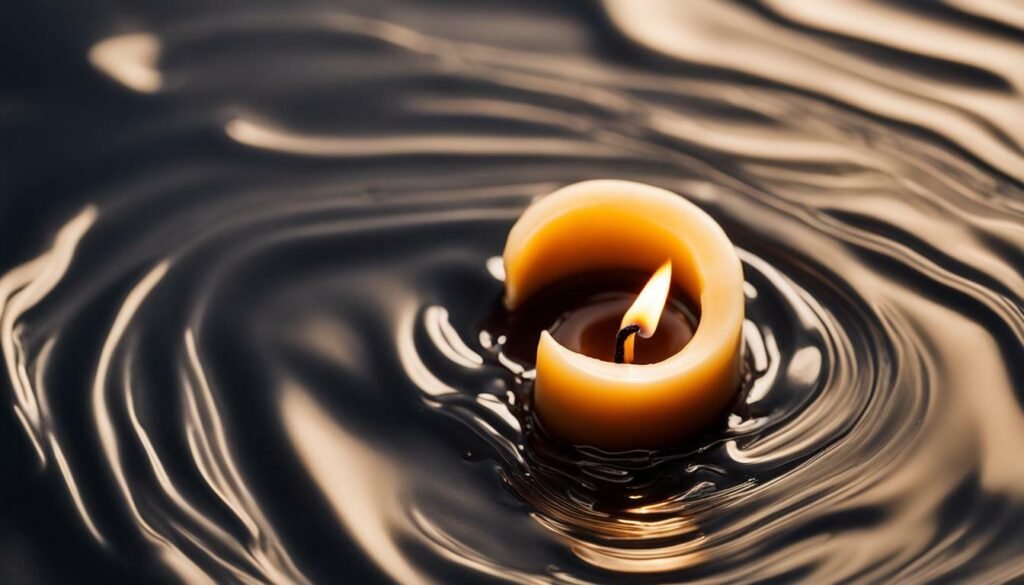
Unleash your creativity and create unique candles that reflect your personal style with these expert tips:
- Experiment with different candle shapes, sizes, and colors
- Try layering different colors of wax to create a stunning visual effect
- Add texture to your candles by incorporating natural materials such as herbs, flowers, or spices
- Create a one-of-a-kind candle by embedding objects such as seashells, crystals, or small toys
- Use decorative finishes such as glitter or metallic paint to add a touch of glam to your candles
Remember to be experimental and have fun with it. Your imagination is the only limit!

Candle making is a fun and rewarding activity that requires careful attention to safety precautions. Here are some tips to keep in mind:
- Always work in a clean and ventilated area, away from flammable materials.
- Wear protective clothing such as gloves and safety glasses to prevent burns and eye injuries.
- Never leave melting wax unattended, and use a double boiler to prevent overheating.
- Use a thermometer to ensure that wax is heated to the proper temperature and avoid overheating, which can cause a fire.
- When using fragrance oils, measure carefully and use appropriate safety gear such as a mask to avoid inhaling dangerous fumes.
- Keep a fire extinguisher nearby and have a well-planned emergency plan in place to address any accidents that may occur.
By following these guidelines, you can enjoy the candle making process with peace of mind and create beautiful, homemade candles safely.

Candle making can be a fun and rewarding hobby, but it’s not without its challenges. Here are some common issues you may encounter during the candle making process and tips to help you troubleshoot them:
- If your candle has uneven burning, it could be due to an incorrectly sized wick or an uneven distribution of fragrance. Try using a larger or smaller wick, or adjusting the amount of fragrance you use.
- If your candle has a sinkhole in the center, it may be due to the wax cooling too quickly. To prevent this, try pouring your wax at a lower temperature or pouring in stages.
- If your candle has a weak scent, it could be due to not using enough fragrance or not allowing the candle to cure for long enough. Be sure to follow the recommended fragrance usage rates and allow your candles to cure for at least a week before lighting.
- If your candle is tunneling (burning down the center and leaving wax around the edges), it could be due to an incorrectly sized wick or not allowing the candle to burn long enough during the first burn. Try using a larger wick or allowing your candle to burn long enough to create a full melt pool.
By understanding and troubleshooting these common candle making issues, you can create beautiful and high-quality candles each time.
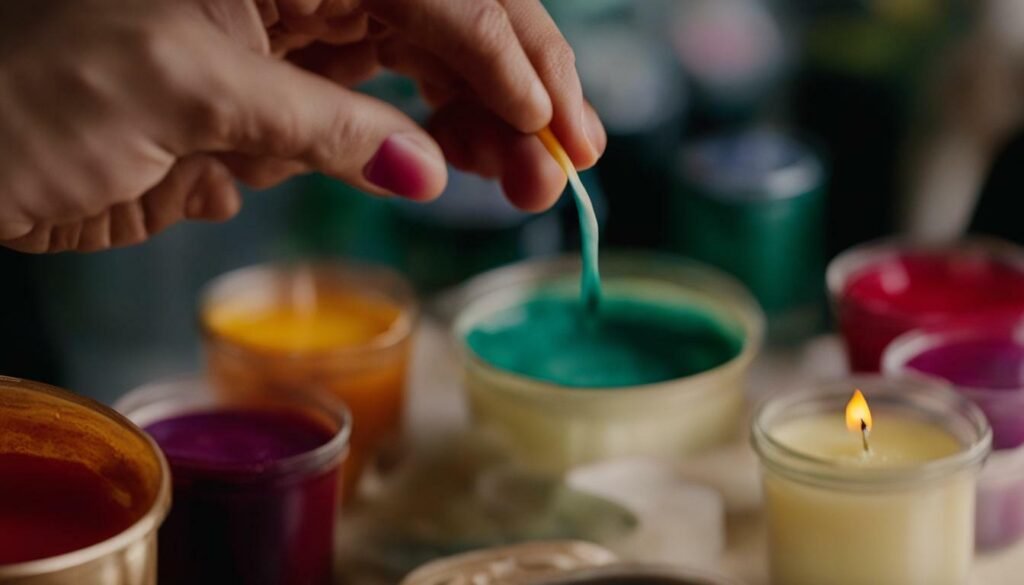
Once you’ve mastered the basics of candle making, it’s time to expand your skills with varying techniques. Here are some advanced methods to try:
- Container candles: Create candles in fun and unique containers such as mason jars or teacups.
- Pillar candles: These are ideal for adding height and dimension to your candle displays.
- Specialty shapes: Explore different shapes such as stars, hearts, and flowers for added visual appeal.
Experiment with different wax types and colors to create beautiful and unique candles. Don’t be afraid to try new techniques and have fun with it!
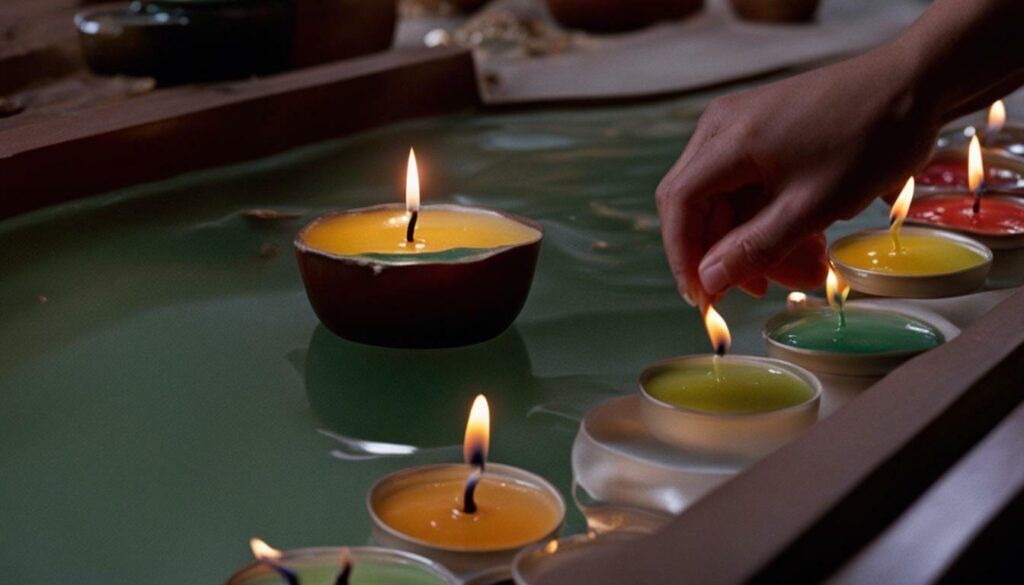
Now that you have made your unique candles, it’s time to package and present them beautifully. A thoughtful and attractive presentation can turn an ordinary candle into a stunning gift. Here are some tips to help you package your candles:
- Use natural materials such as burlap, twine, or raffia to wrap your candles.
- Add a decorative label with your name, the scent of the candle, and any other relevant information.
- Choose a container that complements your candle’s color or scent. For example, a floral-scented candle would look beautiful in a glass jar with a floral print.
- Add some personal touches such as a handwritten note or a small decorative object to make your candle gift even more special.
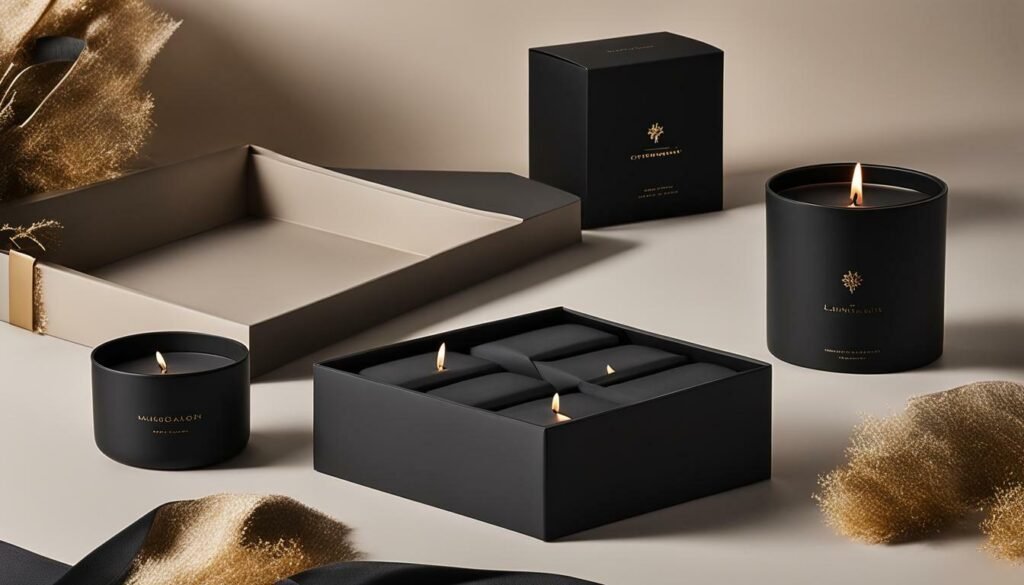
By following these tips, you can ensure that your homemade candles are not only beautiful and fragrant but also a joy to give and receive as a gift.
Candle Making Tips for Beginners
If you’re new to candle making, it’s important to start with the basics and work your way up. Here are some tips to ensure your candle making journey is successful:
- Invest in high-quality supplies. This includes wax, wicks, fragrance oils, and any additives or colorants you plan to use.
- Measure accurately. Use a kitchen scale to measure your wax, fragrance oils, and any additives. This will ensure consistent results and avoid mistakes.
- Start with simple candle designs. Don’t try to create complex designs until you’ve mastered the basics.
- Take safety precautions seriously. Always wear protective gear such as gloves and safety glasses, and never leave melting wax unattended.
- Practice, practice, practice. The more you practice, the better you’ll become at candle making. Don’t be discouraged by mistakes – use them as a learning opportunity to improve your skills.
Remember, candle making is a fun and rewarding hobby that allows you to unleash your creativity. With these tips, you’ll be well on your way to creating beautiful, homemade candles that will add warmth and light to your space.
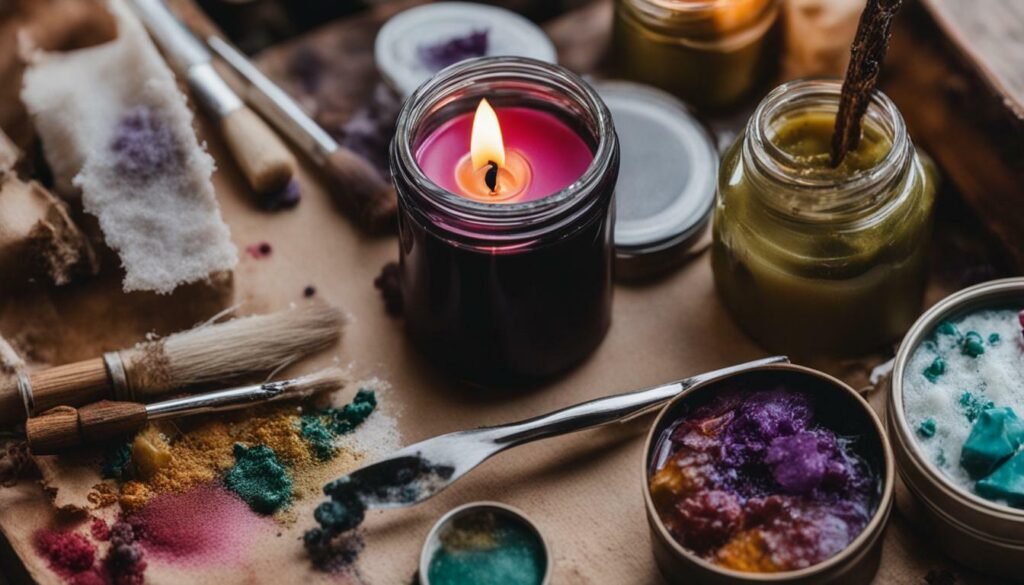
Candle making is an art that allows you to express your creativity and create unique, fragrant candles for your home. With our candle making secrets, DIY candles are a breeze. You now have the knowledge and techniques to get started with the candle making process and craft beautiful, homemade candles.
Remember, the candle making process takes time and practice. Don’t be afraid to experiment with different techniques and fragrances. You may encounter challenges along the way, but don’t give up. Troubleshoot common problems and continue to perfect your craft.
Whether you’re making candles for yourself or as gifts for loved ones, packaging and presentation is key. Consider unique packaging ideas to make your candles stand out and enhance the overall presentation.
So what are you waiting for? Get started on your candle making journey today, and unleash your creativity through the process of crafting unique, beautiful candles.
FAQ
What are some tips for beginners getting started with candle making?
For beginners, it’s important to start with the right supplies. Make sure you have wax, wicks, fragrance oils, and a thermometer. It’s also helpful to follow a recipe or tutorial to learn the basics. Practice and patience are key to mastering the art of candle making.
How do I choose the right wax for my candles?
When choosing wax, consider factors such as melting point, fragrance load, and burn time. Soy wax is popular for its clean burn and ability to hold fragrance well. Beeswax offers a natural option with a subtle honey scent. Experiment with different waxes to find the one that suits your preferences and desired outcome.
How can I add fragrance to my candles?
There are various ways to add fragrance to your candles. You can use fragrance oils specifically designed for candle making, essential oils, or even dried herbs and flowers. Remember to follow recommended fragrance load guidelines and test different combinations to create unique scents.
What are some tips for coloring my candles?
To color your candles, you can use candle dyes, pigments, or even natural additives like herbs or spices. Start with small amounts and gradually increase the intensity until you achieve your desired color. Keep in mind that some fragrances and waxes may affect the final color outcome, so it’s important to test your colors before making large batches.
How do I choose the right wick for my candles?
The right wick depends on factors such as the diameter of your candle and the type of wax you’re using. A larger diameter candle may require a thicker wick to ensure an even burn, while a smaller diameter candle may need a thinner wick. Consider using a wick chart or consulting with a reputable supplier for guidance.
What are some techniques for creating unique candle designs?
There are countless techniques for creating unique candle designs. You can try layering different colored waxes, adding embeds or decorative finishes, or experimenting with specialty molds. Don’t be afraid to let your creativity shine and have fun exploring different design possibilities.
What safety precautions should I follow when making candles?
Safety is paramount when making candles. Always work in a well-ventilated area, use heat-resistant containers and equipment, and keep flammable materials away from open flames. Be cautious when handling hot wax and never leave a burning candle unattended. Familiarize yourself with safety guidelines and follow them diligently.
What should I do if I encounter common candle making issues?
Common candle making issues like wick problems, uneven burning, or fragrance mishaps can be frustrating, but they can often be resolved. Check your wick size and adjust as necessary, ensure proper fragrance measurement, and experiment with different wax types or additives. Troubleshooting is part of the learning process, so don’t get discouraged and keep trying.
What are some advanced candle making techniques I can try?
Once you’re comfortable with the basics, you can explore advanced candle making techniques like creating container candles, pillar candles, or specialty shapes. Each technique requires different materials and skills, so do some research and start with small projects to build your confidence.
How can I package and present my homemade candles?
Packaging and presentation can elevate your homemade candles. Consider using attractive containers, adding labels or tags, and exploring creative packaging ideas like gift boxes or bags. Presentation is particularly important if you plan to give your candles as gifts, so don’t overlook this aspect in your candle making journey.
Any tips specifically for beginners in candle making?
For beginners, it’s crucial to start with small, manageable projects. Focus on mastering the basics, such as proper temperature control and fragrance measurement. Be patient and don’t be afraid to make mistakes – they’re part of the learning process. Join online communities or attend workshops to connect with fellow candle makers and gain valuable insights.
